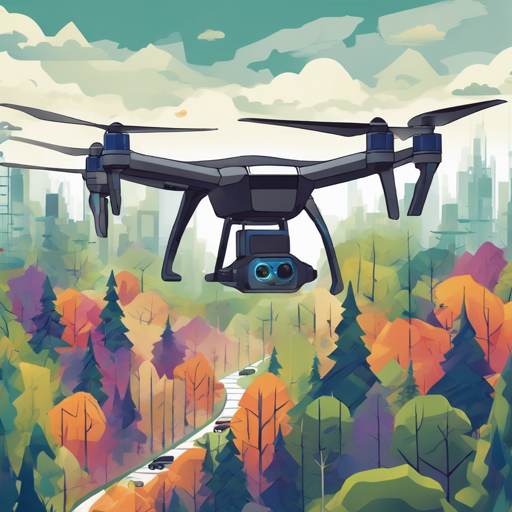In this article, we will walk through the fascinating world of using reinforcement learning algorithms to enhance the autonomous navigation capabilities of Unmanned Aerial Vehicles (UAVs). We will focus on the simulation environment, dependencies, and code components involved in this project.
Getting Started with the Simulation Environment
The simulation runs in a Gazebo environment, which serves as a controlled setting for testing your UAV algorithms in real-time without the risks associated with actual flights.
Implementing Q-Learning for Indoor UAV Navigation
At the core of our project is the Q-Learning.py script, which allows a quadrotor to navigate through a 5×5 grid. The UAV’s movements are determined by a discrete action space, guiding it from a starting point to a goal within the confines of the Gazebo simulation.
# Q-Learning
grid_environment = init_grid(5, 5)
uav_position = (0, 0)
goal_position = (4, 4)
while not reached_goal(uav_position, goal_position):
action = choose_action(uav_position)
uav_position = perform_action(uav_position, action)
reward = get_reward(uav_position, goal_position)
update_q_table(uav_position, action, reward)
Understanding the Code with an Analogy
Imagine you’re playing a game of chess on a 5×5 board, where the goal is to reach a specific square (the goal position) while avoiding opponent pieces. Each piece’s movement can represent an action you take to navigate the board.
- Grid Environment: This is your chessboard, where you can place your pieces (the quadrotor).
- UAV Position: Each turn, you evaluate your current piece’s position on the board.
- Goal Position: This is where you aim to move your piece to (like checkmate).
- Action: Each decision you make correlates to how you can move the piece.
- Reward: Each successful move towards your goal gives you a point, similar to gaining an advantage in chess.
Just like in the chess game, the UAV learns and improves its pathfinding skills through a series of games (iterations) until it can consistently reach the goal while avoiding penalties (moving into an opponent piece).
Dependencies
Before diving into coding, ensure you have the following dependencies installed:
- Ubuntu 16.04
- ROS Kinetic
- Gazebo 7
- ArDrone Autonomy ROS Package
- OpenAI Gym 0.9.3
- TensorFlow 1.1.0 (preferably with GPU support)
- Python 2.7
Troubleshooting Common Issues
- Dependency Errors: Ensure all required packages are correctly installed. Use package managers like APT or PIP to install missing dependencies.
- Gazebo Not Launching: Check if Gazebo is installed correctly and running. Validate if your system meets Gazebo’s hardware requirements.
- Simulation Lag: If the environment is laggy, consider optimizing the simulation settings or the computer resources being utilized.
- Constantly Reaching the Same Position: Tweak the hyperparameters of your Q-learning algorithm to encourage exploration.
For more insights, updates, or to collaborate on AI development projects, stay connected with fxis.ai.
Conclusion
By understanding the basics of reinforcement learning and how it applies to UAV navigation, you unlock new possibilities for autonomous technologies. The combination of Q-learning and PID control allows the UAV to act intelligently in structured environments, setting the stage for advanced navigation algorithms.
At fxis.ai, we believe that such advancements are crucial for the future of AI, as they enable more comprehensive and effective solutions. Our team is continually exploring new methodologies to push the envelope in artificial intelligence, ensuring that our clients benefit from the latest technological innovations.

